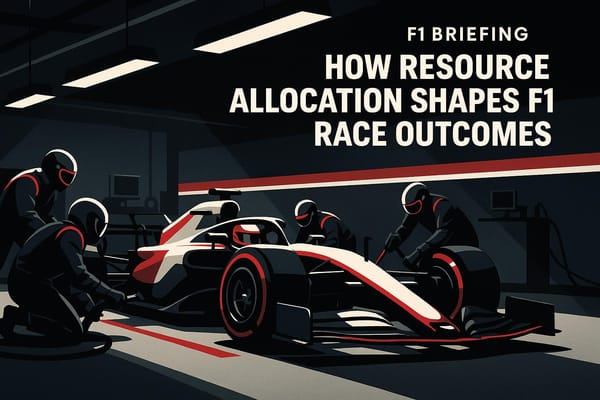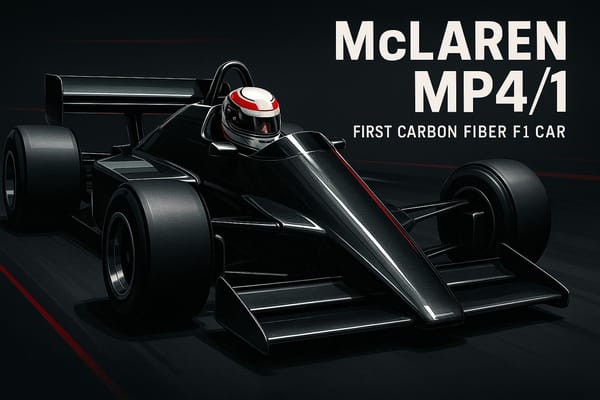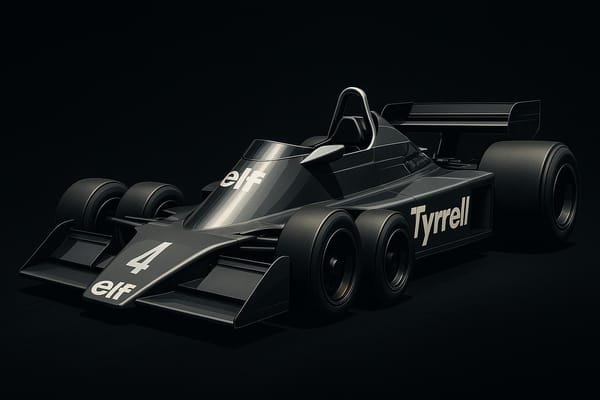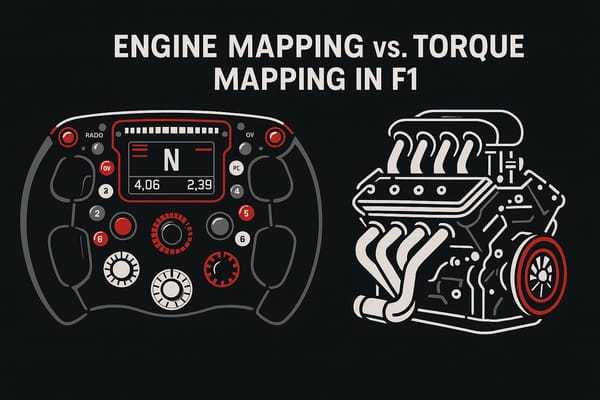KERS vs ERS: Key Differences Explained
Explore the evolution from KERS to ERS in Formula 1, highlighting the key differences, performance benefits, and impacts on race strategies.
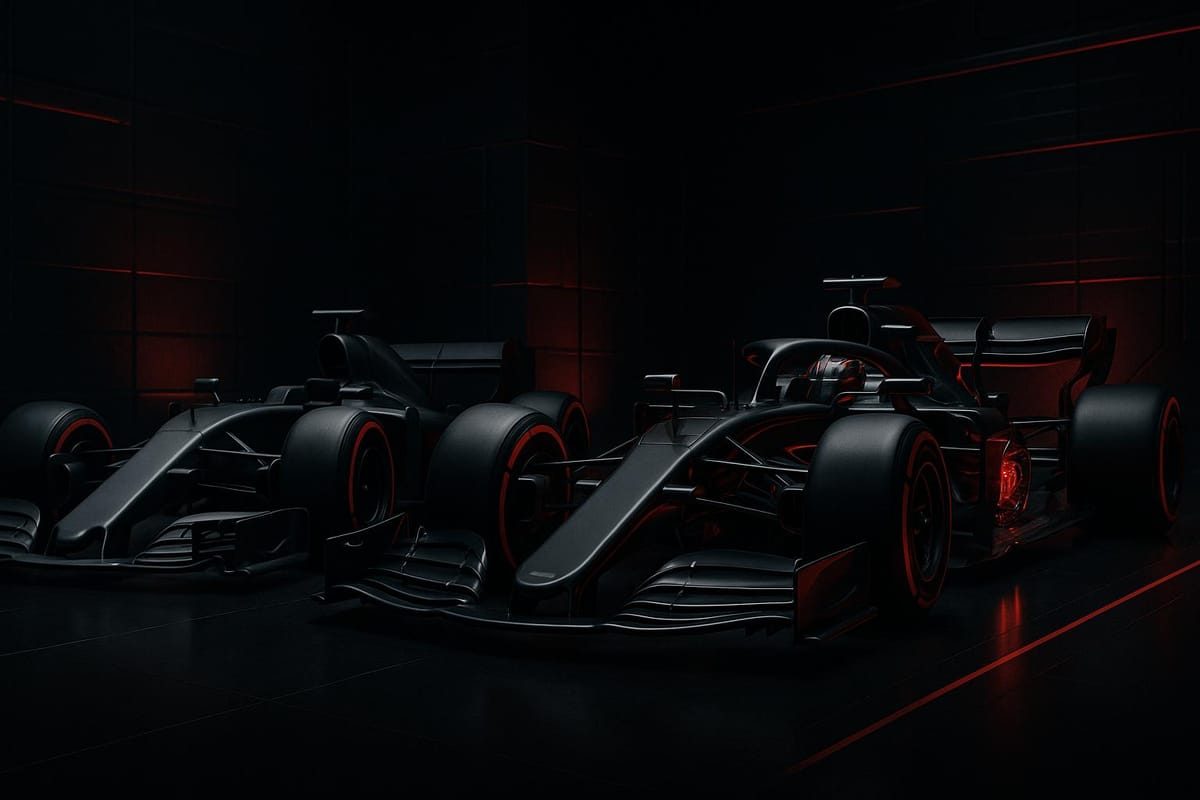
What’s the difference between KERS and ERS in Formula 1?
KERS (Kinetic Energy Recovery System) and ERS (Energy Recovery System) are both energy recovery systems used in F1, but ERS is a more advanced version that replaced KERS in 2014. Here’s a quick breakdown:
- KERS: Captures energy during braking and provides an 80-horsepower boost for up to 7 seconds per lap. Drivers manually control it using a boost button.
- ERS: Combines two systems - MGU-K (kinetic energy recovery) and MGU-H (thermal energy recovery from exhaust gases). It delivers a 160-horsepower boost for up to 33 seconds per lap and is fully automated.
Quick Comparison
| Feature | KERS | ERS |
|---|---|---|
| Power Output | 80 HP | 160 HP |
| Energy Sources | Braking only | Braking + Exhaust Heat |
| Activation | Manual (boost button) | Automated |
| Deployment Time | 6.67 seconds/lap | 33 seconds/lap |
| Components | Single recovery unit | Dual MGUs (K and H) |
ERS is not just more powerful but also more efficient, offering longer deployment times and integrating thermal energy recovery for better performance. This shift has also influenced hybrid road car technology, making it more efficient and practical.
From KERS to ERS: The History and Future of Energy Recovery Systems in F1
Technical Differences
The transition from KERS to ERS marked a significant step forward in energy recovery systems within Formula 1. Let’s break down the main technical differences.
System Parts and Design
The designs of KERS and ERS reflect their distinct approaches to energy recovery. KERS operated with a relatively simple setup, comprising two main components: a Motor Generator Unit (MGU) to convert kinetic energy into electrical energy and an energy storage system, which could either be a battery or a flywheel.
In contrast, ERS incorporates a more complex system with additional components:
| Component | Function | Energy Type |
|---|---|---|
| MGU-K | Recovers energy during braking | Kinetic |
| MGU-H | Harvests energy from exhaust heat | Thermal |
| Energy Store | Stores the recovered energy | Electrical |
| Control Electronics | Manages the entire system | N/A |
This advanced design allows ERS to recover and utilize energy more efficiently than its predecessor.
Energy Collection Methods
KERS was limited to recovering energy only during braking. ERS, however, employs two distinct methods to collect energy:
- Kinetic Energy: Captured by the MGU-K during braking, with up to 2 MJ of energy recovered per lap.
- Thermal Energy: Harvested by the MGU-H from the heat of exhaust gases.
As Remi Taffin, Renault Sport F1's head of track operations, explained:
"In qualifying you gain four tenths of a second per lap with KERS. Sometimes it will be three tenths, sometimes five, depending on the track layout, but the average is four."
Power Delivery
The advanced design and energy recovery methods of ERS result in a significant improvement in power delivery compared to KERS:
| Characteristic | KERS | ERS |
|---|---|---|
| Output | 80 hp | 160 hp |
| Deployment Time | 6.67 seconds per lap | 33 seconds per lap |
| Energy Recovery | Kinetic (braking only) | Kinetic (MGU-K up to 2 MJ per lap) & Thermal (MGU-H) |
Race Strategy Effects
Advances in energy recovery systems have completely reshaped how race strategies are crafted. The shift from manual systems to automated ones has made data-driven decisions the cornerstone of modern racing tactics.
KERS Driver Control
The KERS system required drivers to take a hands-on approach. They had to manually activate the system using a "boost button" on their steering wheel, which added a layer of complexity to their race management. Drivers needed to juggle several factors to maximize the system's impact:
| Aspect | Strategic Consideration |
|---|---|
| Timing & Duration | Decide the best moments to deploy the 80-horsepower boost (lasting 6.67 seconds) for overtaking or defending positions. |
| Energy Balance | Keep an eye on energy recovery during braking zones to ensure consistent availability. |
| Power Output | Manage the boost effectively to gain the most advantage without wasting energy. |
This manual control required sharp focus and split-second decision-making, making it a critical part of a driver's strategy. However, the introduction of ERS has shifted much of this responsibility to automated systems.
ERS Automation
The modern ERS system has taken energy deployment to a whole new level. Unlike KERS, ERS uses automation to manage energy recovery and delivery with precision, thanks to advanced engine mapping systems. Teams rely on an intricate network of over 300 sensors that generate approximately 3 GB of telemetry data during a single race. This data allows for real-time adjustments, optimizing every aspect of energy management.
"Data is in the team's lifeblood. Every element of performance – how we run a race, how we develop a car, how we select and analyze drivers – it's all driven by data." - Christian Horner, CEO of Oracle Red Bull Racing
With ERS automation, drivers can focus entirely on their racecraft while the system handles energy recovery and deployment. It dynamically adjusts based on factors like braking intensity, battery levels, engine settings, and track conditions, ensuring maximum efficiency at all times.
ERS Performance Benefits
ERS brings several key advantages to the table, far surpassing what KERS could offer. By capturing both kinetic and thermal energy, ERS provides:
- Improved acceleration through reduced turbo lag.
- Strategic energy conservation for critical overtaking opportunities.
- Better fuel efficiency by optimizing energy recovery.
Teams now rely heavily on simulations and data analytics to fine-tune energy deployment for each track. Considering that drivers spend about 17% of a lap under braking, ERS ensures maximum energy recovery during these crucial moments, all while delivering consistent power throughout the race. This seamless integration of technology and strategy has become a game-changer in modern motorsport.
Road Car Applications
The leap from Formula One to consumer vehicles reveals how technologies like KERS (Kinetic Energy Recovery System) and ERS (Energy Recovery System) adapt to meet everyday driving needs. F1's cutting-edge innovations have laid the groundwork for their integration into road cars, though each system faces unique challenges and opportunities.
KERS Road Limitations
KERS, despite its promise, has struggled to find widespread use in consumer vehicles due to its complexity, high costs, and integration hurdles. For example, Jaguar's 2011 XF utilized a mechanical flywheel KERS system with the following characteristics:
| Parameter | Implementation Details | Impact |
|---|---|---|
| System Weight | 143 lbs (65 kg) | Increased overall vehicle weight |
| Energy Storage | 120 Wh at 60,000 rpm | Limited storage capacity |
| Power Output | 80 HP (60 kW) | Modest performance improvement |
| Fuel Savings | ~20% | Noticeable efficiency enhancement |
While this system offered fuel savings of about 20%, its weight and limited energy storage capacity posed significant drawbacks. Volvo took a more refined approach in 2012 with its S60 sedan, which featured a carbon-fiber flywheel KERS system. This lightweight setup (13 lbs or 6 kg) delivered quicker acceleration, reducing the 0–60 mph time by 1.5 seconds compared to the standard S60 T5. However, KERS technology still faces challenges in scaling for mass-market adoption.
ERS Hybrid Impact
ERS technology has proven to be a game-changer in hybrid powertrains, offering greater flexibility and efficiency. Its advancements have significantly improved hybrid vehicle systems, as shown below:
| Feature | Traditional Hybrid | ERS-Enhanced Hybrid |
|---|---|---|
| Battery Size | Standard | 50–80% reduction |
| Manufacturing Cost | $8,000 per unit | $2,000 per unit |
| System Efficiency | 34% | 74% |
| Space Requirements | 50 L | 20 L |
These improvements have made ERS far more practical and cost-effective. For instance, manufacturing costs have dropped significantly, and the systems now require less space while delivering higher efficiency. The market has embraced these advancements, with the global electric vehicle wireless charging sector expected to grow from $15 million in 2022 to $377 million by 2027. Automakers like Hyundai are already incorporating advanced wireless charging capabilities into models such as the Genesis GV60.
ERS technology has also made an impact on public transportation. In London, buses equipped with Flybrid systems have demonstrated up to a 45% reduction in energy consumption. This highlights the potential for ERS to not only improve vehicle efficiency but also contribute to reducing environmental impacts in commercial transport.
Summary
The evolution from KERS to ERS brought a significant leap in power and functionality, increasing output from 80 HP to 160 HP. While KERS focused solely on capturing braking energy for selective use, ERS introduced a broader system for recovering energy, combining multiple sources.
| Feature | KERS | ERS |
|---|---|---|
| Power Output | 80 HP | 160 HP |
| Energy Sources | Braking only | Braking and exhaust heat |
| Activation | Driver-controlled | Automated mapping |
| Deployment Duration | 6.67 seconds per lap | 33 seconds per lap |
| System Components | Single recovery unit | Dual MGUs (K and H) |
These differences translate into clear strategic advantages during races. A landmark moment came with Lewis Hamilton's win at the 2009 Hungarian Grand Prix, the first victory for a hybrid-powered car. ERS technology stands out by integrating the MGU-K (Motor Generator Unit-Kinetic) with the MGU-H (Motor Generator Unit-Heat), allowing it to recover thermal energy from exhaust gases - making energy recovery not only more efficient but also more impactful on performance.
The influence of ERS extends beyond Formula 1. Advances in this technology have directly contributed to the development of hybrid systems in road cars. With yearly regulation adjustments aimed at improving efficiency and performance, the progress in energy recovery systems continues to shape both racing strategies and consumer vehicle technology. This dual impact underscores how innovations on the track can drive meaningful changes in everyday automotive engineering.
FAQs
What are the key differences between KERS and ERS, and how have they changed Formula 1 strategies?
The transition from KERS (Kinetic Energy Recovery System) to ERS (Energy Recovery System) has completely changed the game in Formula 1, offering teams and drivers far greater energy recovery and deployment options. Unlike KERS, which only captured kinetic energy during braking, ERS combines two sources: kinetic energy through the MGU-K (Motor Generator Unit-Kinetic) and thermal energy via the MGU-H (Motor Generator Unit-Heat). This dual system delivers a powerful boost of up to 160 horsepower, giving drivers a significant edge for overtaking or defending their position on the track.
ERS has also added a new layer of complexity to race strategies. Teams now fine-tune energy deployment based on the unique demands of each track and specific race scenarios. Drivers can use ERS to gain extra acceleration out of corners, save energy for high-stakes moments, or adapt quickly to changing conditions during the race. This strategic energy management has become a critical factor in determining success in today’s Formula 1.
What are the challenges of adapting KERS and ERS for everyday vehicles?
Adapting KERS (Kinetic Energy Recovery Systems) and ERS (Energy Recovery Systems) for everyday vehicles isn't without its challenges. One of the biggest obstacles is cost. These advanced systems are expensive, and incorporating them into consumer cars can push up prices, making them less accessible to the average buyer.
Another issue is the difficulty of integrating these technologies into traditional vehicle designs. Retrofitting or modifying existing powertrains to work with KERS or ERS involves complex engineering, which not only complicates production but also makes maintenance more challenging. On top of that, these systems thrive in stop-and-go traffic where frequent braking recaptures energy. However, their efficiency drops significantly during highway driving, where braking is less frequent.
These hurdles have slowed the broader use of KERS and ERS in consumer vehicles, even though they hold promise for improving energy use and cutting emissions.
How does ERS automation improve driver performance compared to the manual operation of KERS?
The automation of ERS takes driver performance to the next level by simplifying energy management while providing up to 160 horsepower of extra power. Unlike KERS, where drivers had to manually handle energy recovery and deployment, ERS works automatically, capturing energy from braking and exhaust heat without any manual input.
This hands-off system lets drivers concentrate fully on race strategies like overtaking opponents or defending their position, free from the distraction of managing energy systems. The result? ERS boosts both acceleration and top speed, while also enabling smarter, more efficient race execution.

